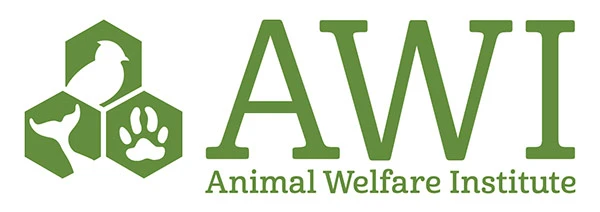
Senior Housing Market Trends: Navigating the Future of Elderly Care
Introduction
The senior housing market is at the cusp of a significant evolution. As the Baby Boomer generation transitions into retirement, the demand for specialized housing tailored to their needs is escalating. This demographic shift is not just about numbers; it's about a change in expectations, lifestyle preferences, and the growing importance of technology in everyday life. Senior living is no longer just about finding a comfortable place to reside; it's about finding a community that resonates with the aspirations and lifestyles of a generation that is redefining what it means to be a senior.
The current state of the senior housing market is a complex interplay of supply and demand dynamics. On one hand, we have an increasing number of seniors looking for housing solutions that offer more than just the basic amenities. On the other hand, there is a growing scarcity of affordable options that cater to the diverse needs of this population. This scarcity is compounded by economic uncertainties and evolving market conditions, making affordable senior housing a crucial issue.
As we delve into the state of senior housing in 2024, we need to consider various facets including the challenges in meeting the rising demand, the impact of technology on senior living, and the investment trends shaping this sector. The need for innovative, affordable, and tech-savvy housing solutions for seniors has never been more pronounced. In this blog post, we explore these trends, providing insights into what the future holds for senior housing.
Current State of Senior Housing
The current landscape of senior housing is marked by a tug-of-war between increasing demand and restrained supply. This delicate balance is influenced by several factors, including economic conditions, demographic shifts, and evolving market needs.
Rising Demand Amidst Limited Supply
Senior housing occupancy rates have shown consistent improvement, indicating a strong and growing demand. This surge is attributed to the aging Baby Boomer generation seeking housing options that align with their lifestyle and care needs.
Despite the rising demand, the growth in senior housing inventory remains modest. The year-over-year inventory growth as of late 2023 stood at only 1.3 percent, one of the smallest increases in over a decade. This slow growth in inventory is partially due to tight financing conditions, which hamper new construction efforts.
The Affordability Crisis
Amidst these dynamics, the demand for affordable senior housing has spiked, driven by economic uncertainties and a growing segment of the population facing income inequality. The challenge is to provide housing solutions that are not only physically and socially suitable but also financially accessible to a diverse senior demographic.
Public-private partnerships are emerging as a crucial element in addressing this gap. By combining resources and expertise, these partnerships aim to preserve existing affordable housing and encourage new developments. However, these efforts are just keeping pace with the growing needs, highlighting the urgency for more comprehensive solutions.
Innovative Approaches and Challenges
In response to these challenges, the senior housing sector is witnessing innovative approaches, including the development of mixed-income communities and the utilization of building tax incentives to bolster affordable housing projects.
Despite these efforts, the sector still grapples with the need to accommodate a growing number of low-income older adults, raising questions about long-term sustainability and the scalability of current solutions.
Middle-Income Seniors’ Dilemma
The affordability crisis in senior housing disproportionately affects middle-income seniors. This demographic, often overlooked in discussions about senior living, faces unique challenges in finding suitable and affordable housing options.
The Affordability Quest of Middle-Income Seniors
The economic aftermath of the pandemic has left many middle-income seniors more price-conscious. They are actively seeking senior care options that strike a balance between quality and affordability.
Research suggests a substantial number of Americans aged 75 and older will not be able to afford assisted living and long-term care in the coming decade. The median yearly cost of living in such facilities has been rising steadily, placing a significant financial burden on seniors who have often already paid off their homes.
In-Home Care: A Growing Solution
In response to these financial challenges, there's a noticeable shift towards in-home care solutions. These services offer personalized care plans that fit the needs and price points of families, providing a viable alternative to more expensive assisted living facilities.
In-home care services are thriving as they cater to the affordability quest of seniors, offering a blend of flexibility, comfort, and cost-effectiveness.
Staffing Challenges and Innovative Care Models
The senior housing industry is also grappling with staffing shortages, particularly in skilled nursing positions. This shortage affects the industry’s capacity to accommodate the growing senior population.
Despite these challenges, some senior living businesses are adapting by incorporating technology and innovative care models. This includes a focus on chronic condition management, preventative care, and enhanced programming in senior living communities.
Technology and Wellness in Senior Housing
As we move into 2024, technology and wellness are becoming increasingly integral to senior housing, revolutionizing how care and engagement are delivered in these communities.
Integrating Advanced Technologies
Augmented Reality (AR) and Virtual Reality (VR) technologies are bridging the gap between physical distance and emotional closeness. These technologies allow seniors to engage in immersive virtual gatherings and explore new horizons, bringing the outside world into their living spaces.
VR is also finding therapeutic applications in senior healthcare, including relaxation therapy, pain management, and cognitive exercises. These technological interventions are enhancing the overall well-being and quality of life for seniors.
Enhancing Senior Living with Educational Opportunities
Beyond entertainment and health, AR and VR are opening doors to a wide array of educational content and experiences. From virtual art classes to historical reenactments, these technologies offer mental stimulation and growth opportunities, catering to the intellectual curiosity of seniors.
Transforming Senior Lifestyle in 2024
Senior living communities are undergoing significant changes to cater to the evolving needs and preferences of the modern senior. This includes a broader range of activities, holistic wellness programs, and intergenerational interactions to ensure seniors remain engaged and connected.
Advanced healthcare services, including telehealth and on-site medical facilities, are becoming standard in senior communities, offering streamlined access to healthcare.
Investment and M&A Trends in Senior Housing
As we look towards 2024, the senior housing market is poised for a significant rebound in investment and merger and acquisition (M&A) activities, shaped by a combination of demographic trends and market responses.
A Market Poised for Growth
The senior housing industry is expected to experience a resurgence in pre-pandemic occupancy levels by 2024, indicating a robust recovery and a potential boom in transactions. This trend is driven by a steady increase in occupancy rates across various segments of the senior living industry, signaling a strong market demand.
Furthermore, the industry is anticipated to see heightened levels of M&A activities, with experts predicting a wave of dealmaking as the market stabilizes and investor confidence returns. This surge in M&A could bring transformative changes to the senior housing landscape.
Quality of Care as a Key Performance Indicator
In the realm of senior housing investments, there is a clear correlation between the quality of care and investment performance. Facilities that prioritize high-quality care tend to outperform their counterparts, attracting more residents and achieving better financial outcomes.
The evolving preferences of today's seniors and their families are also influencing investment strategies. Investors are focusing on developments that cater to these refined tastes, such as providing access to amenities and spacious housing units.
Challenges and Opportunities in Financing and Development
Despite the optimistic outlook, the senior housing sector faces challenges, particularly in construction financing, which has implications for new development. However, these constraints also present opportunities for investors, as the limited new supply may enhance the value of existing properties.
The need-based segments of senior housing, like assisted living and memory care, are garnering increasing interest from investors. These segments offer stability and resilience, especially in uncertain economic times, given their essential nature.
Conclusion
As we look towards 2024, the senior housing market is poised for a period of significant transformation and growth. The demographic shift towards an aging population, coupled with technological advancements and changing lifestyle preferences, has set the stage for a new era in senior living. The market's current state, marked by a high demand for affordable and quality housing, presents both challenges and opportunities for developers, investors, and policymakers.
The rise in popularity of in-home care, technological innovations like AR and VR, and the evolving investment landscape are reshaping the senior housing industry. These developments are not just creating new business opportunities but are also significantly improving the quality of life for seniors. As the industry adapts to these changes, the focus remains on providing care and housing solutions that are accessible, comfortable, and conducive to the well-being of seniors.
Looking ahead, the senior housing market is set to play a pivotal role in addressing the needs of a growing senior population. It's a sector where compassion meets innovation, and investment goes hand in hand with enhancing the lives of the elderly. The trends we see today are just the beginning of a more dynamic, responsive, and inclusive approach to senior living.
WE OFFER OVER
25+
PROGRAMS
WE HAVE SERVED
12000+
STUDENTS
VETERAN STAFF
40+ Years
INDUSTRY EXPERIENCE
PROUDLY PROVIDING
23+ Years
OF EDUCATION
INLAND REAL ESTATE SCHOOL, INC. SUPPORTS

Campus Visiting Hours by appointment only:
1st-18th each month AM times, M-F
19th-end of the month PM times, M-F
Visiting hours need to be scheduled in advance
OAK BROOK, ILLINOIS 60523. © INLAND REAL ESTATE SCHOOL, INC. A PROFESSIONAL STUDIES INSTITUTE, INC. COMPANY, 2010. ALL RIGHTS RESERVED.
NOT AFFILIATED WITH THE INLAND REAL ESTATE GROUP OF COMPANIES, INC. THE INLAND NAME IS USED UNDER LICENSE. Privacy Policy







